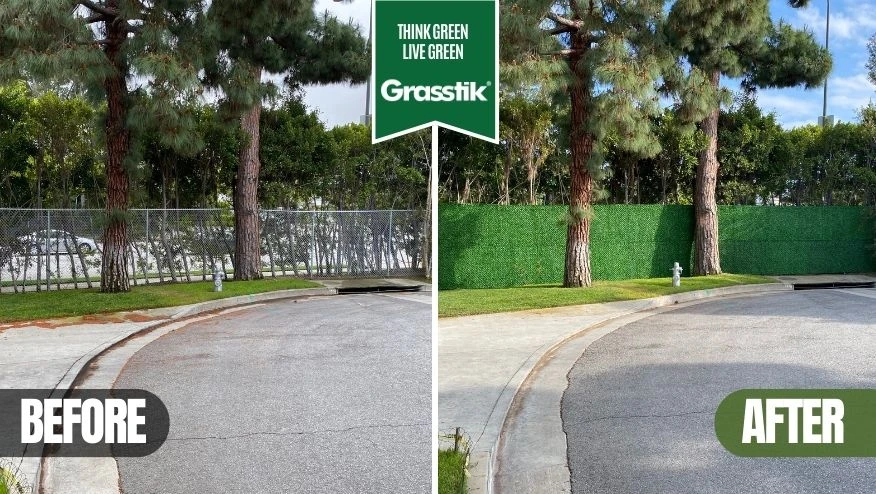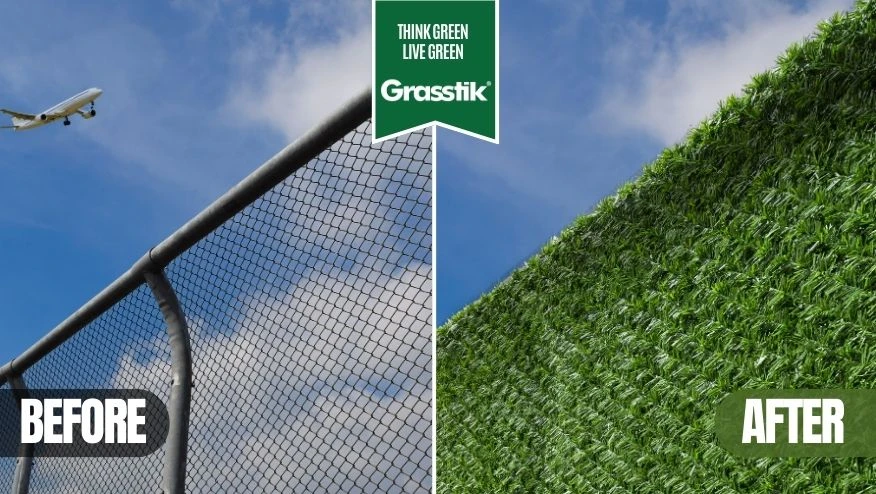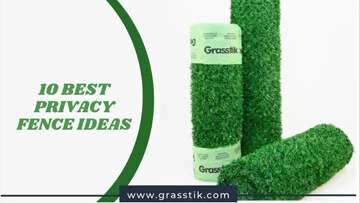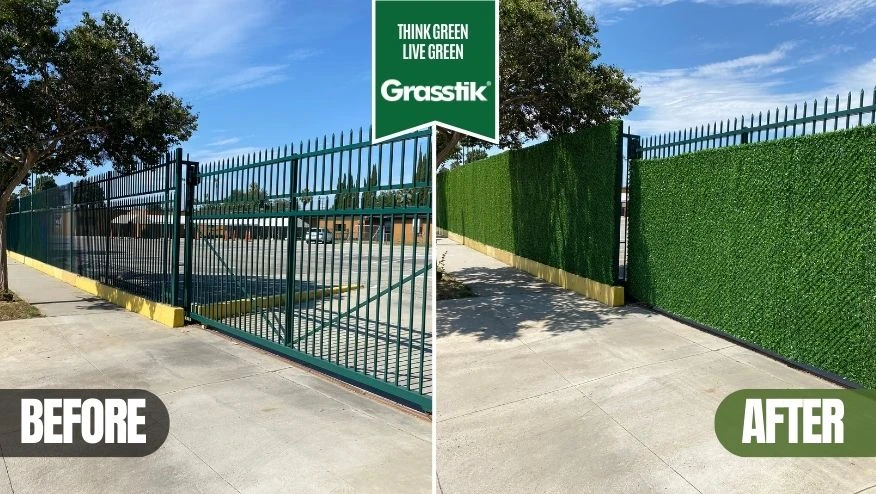
Enhancing the privacy of a chain link fence is a common concern for many homeowners looking to create a more secluded outdoor environment. Chain link fences are affordable and durable but offer little privacy due to their open mesh design. Fortunately, there are several effective methods to make chain link fence private that range from simple DIY solutions to more permanent modifications. Whether you prefer a quick and easy fix or a more customized approach, this guide will explore various options to help you achieve the desired level of privacy for your fence.
Understanding the Basics of Chain Link Fences
Chain link fences, renowned for their durability and cost-effectiveness, are made from galvanized or coated steel wire that is woven into a distinct diamond pattern. These fences are excellent for demarcating property boundaries and enhancing security due to their robust structure. However, their open weave design offers minimal privacy, which is a significant issue for many homeowners. This lack of visual barrier often leads individuals to look for ways to modify or enhance their fences to increase privacy while maintaining the fence's inherent benefits.
Advantages of Chain Link Fences
Chain link fences are highly valued for their low maintenance requirements and their resilience against harsh weather conditions. They offer a versatile and practical solution for various environments, from residential yards to commercial properties, without detracting from the landscape’s aesthetic. Despite their openness, integrating grass fence panels can significantly transform a simple chain link fence into a robust privacy barrier. This enhancement not only increases privacy but also adds to the functionality and appearance of the property.
Privacy Issues with Chain Link Fences
The primary disadvantage of chain link fences is their inherent lack of privacy. The open weave of the fencing allows for clear visibility into the enclosed space, which can be problematic for those wishing to enjoy their backyard or pool area without external observation. This visibility is a significant concern for many, prompting the exploration of various methods to turn chain link fence into privacy fence. Homeowners often seek solutions that not only enhance privacy but also blend with the existing security and aesthetic of the fence.
Strategies for Enhancing Privacy
Finding an answer to how to cover chain link fence and enhancing the privacy of a chain link fence can be achieved through several innovative and effective methods. One of the simplest ways to make a chain link fence private is by using privacy screens or fabric covers that attach directly to the fence. These materials are available in various colors and patterns, providing an immediate aesthetic upgrade along with privacy. Another popular method is the installation of privacy slats, which slide into the fence’s mesh, offering a more permanent solution. For a greener option, planting dense shrubs or climbing vines along the fence can also create a natural privacy barrier. Each method provides a unique set of benefits, allowing customization according to personal preference and landscape design.
Integrating Grass Fences for Natural Privacy
Integrating artificial grass walls into your chain link fence is a modern solution that offers both privacy and aesthetic appeal. These walls are made from high-quality synthetic fibers that mimic the look of natural grass without the maintenance requirements. Artificial grass walls can be easily attached to existing chain link fences, creating an immediate lush, green barrier. This method not only enhances privacy but also adds a vibrant touch of nature to any outdoor space, making it ideal for urban areas where greenery is limited. The convenience and effectiveness of artificial grass walls make them a popular choice for those seeking both privacy and beauty in their fencing solutions.
Types of Grass Fences
- Basic Synthetic Panels: Standard panels that provide uniform coverage and are easy to install.
- Interlocking Tiles: Modular tiles that can be snapped together for a customizable fit.
- Expandable Rolls: Flexible rolls that can be cut to sizes, suitable for larger areas.
- Decorative Screens: These come with floral or leafy patterns, offering an enhanced visual appeal along with privacy.
Benefits of Choosing Grass Fences
Choosing grass fences provides numerous benefits, yet there are some considerations to keep in mind:
- Aesthetic Improvement: Instantly transforms a dull fence into a vibrant, green wall.
- Low Maintenance: No watering, trimming, or fertilizing required, unlike natural plants.
- Durability: Resistant to weather changes, maintaining color and form.
- Versatility: Suitable for various settings, from residential to commercial areas.
Adding Privacy Slats to Chain Link Fences
Adding privacy fence slats to a chain link fence is a cost-effective way to enhance privacy without incurring significant labor costs. The installation process is straightforward and can often be a DIY project, which helps in reducing expenses typically associated with professional installations. The simplicity of sliding the slats through the mesh of the chain link fence means that most homeowners can complete the task without specialized tools or extensive labor. However, for large projects, hiring professionals might be preferable, and labor costs could vary depending on the size and complexity of the fence.
Material Options for Privacy Slats
- Vinyl Slats: Durable, resistant to weather, and available in a variety of colors.
- Wood Slats: Offer a natural look but require maintenance to prevent decay and warping.
- Aluminum Slats: Lightweight, rust-resistant, and provide a modern appearance.
- Composite Slats: A blend of wood and plastic, offering durability and minimal maintenance.
Installation Guide for Privacy Slats
Installing privacy slats into a chain link fence is relatively straightforward:
- Measure the Fence: Determine the length and height of your chain link fence to know how many slats you'll need.
- Insert the Slats: Slide the slats vertically through the diamonds of the chain link from the top to the bottom of the fence.
- Secure the Bottom: Depending on the type of fence slat, you may need to secure the bottom with horizontal locking channels to prevent them from sliding up.
- Trim as Needed: If the slats are too long for your fence, cut the excess length from the bottom after installation.
Utilizing Climbing Plants and Vines
Using climbing plants and vines is often considered the best way to make a chain link fence private. This natural method enhances the aesthetic of your outdoor space while providing an eco-friendly privacy solution. Climbing plants grow along the structure of the fence, filling in gaps and creating a living wall that obstructs views. This method not only offers privacy but also contributes to local biodiversity, supporting various wildlife. The choice of plant depends on the climate, the amount of maintenance you're willing to do, and the growth speed you desire.
Selecting Fast-Growing Climbing Plants
When selecting climbing plants, consider their suitability to your local climate and environmental conditions:
- Ivy (Hedera): Thrives in cooler climates and grows quickly with minimal care.
- Clematis: Requires moderate climates and produces beautiful, large flowers.
- Morning Glory: Loves the sun and grows very fast, ideal for warm climates.
- Wisteria: Produces lush foliage and stunning flowers, best for moderate to warm climates.
- Jasmine: Offers fragrant blooms and grows well in warmer climates.
Tips for Planting and Care
- Check Soil Quality: Ensure the soil at the base of your fence is fertile and well-drained.
- Regular Watering: Young plants need consistent moisture to establish roots.
- Support Climbing: Initially, help your plants by attaching them to the fence with ties.
- Prune Regularly: Trimming plants encourages denser growth and healthier vines.
- Monitor for Pests: Keep an eye on common pests that could damage your plants.
- Fertilize Seasonally: Provide nutrients during the growing season to support robust growth.
Maintenance Tips for Long-lasting Privacy
Maintaining privacy enhancements is key to ensuring they continue to provide effective coverage and remain aesthetically pleasing for years. Whether you've chosen a grass fence roll, artificial grass walls, or natural plant solutions, regular care and maintenance are crucial. Each type of privacy solution requires specific upkeep methods, from cleaning and securing artificial materials to nurturing and pruning live plants. Consistently maintaining these additions not only prolongs their life but also keeps your outdoor space looking its best.
Caring for Artificial Grass Fences
- Routine Cleaning: Wash with water and a gentle cleanser to remove dirt and debris.
- Visual Inspection: Regularly check for tears or damage, especially after severe weather.
- Secure Attachments: Ensure all fasteners and supports remain tight and secure.
- Sunlight Exposure: Monitor for any fading or degradation due to prolonged sunlight exposure.
- Pest Control: Though rare, pests can nest in artificial materials, so keep an eye out and manage accordingly.
Upkeep of Plant-Based Privacy Solutions
Maintaining plant-based privacy solutions ensures they continue to thrive and provide the desired level of seclusion:
- Watering: Adequate hydration is crucial, especially during dry periods.
- Pruning: Trim overgrowth to maintain shape and promote denser foliage.
- Nutrition: Fertilize regularly to support healthy growth.
- Pest and Disease Management: Monitor and treat for pests and diseases to prevent damage.
- Support Structures: Check and maintain any stakes or trellises used to support climbing plants.
- Seasonal Care: Prepare plants for winter where applicable and manage new growth in the spring.
Legal Considerations and Good Neighbor Practices
When enhancing the privacy of your chain link fence, it’s crucial to consider legal regulations and maintain good relationships with neighbors. Compliance with local zoning laws, building codes, and homeowner association (HOA) rules is essential to avoid potential disputes and legal challenges. Engaging in open communication with neighbors about your plans can foster goodwill and prevent conflicts. It’s also important to ensure that your privacy solutions do not obstruct visibility in a way that compromises safety, such as blocking drivers' views on nearby roads. By respecting legal guidelines and practicing considerate neighbor relations, you can effectively enhance your fence’s privacy without adverse repercussions.
Understanding Local Zoning Laws
Before modifying your chain link fence, familiarize yourself with the local zoning laws in your area. These regulations can vary significantly and may include restrictions on the height of structures, types of materials allowed, and how close to property lines you can build. Some areas may require a permit for certain types of modifications, especially if they involve structural changes. It’s also common for local laws to dictate the direction certain modifications face, such as having the more finished side of a fence facing outward. Checking these details beforehand can save you from costly mistakes and the hassle of having to redo your enhancements.




